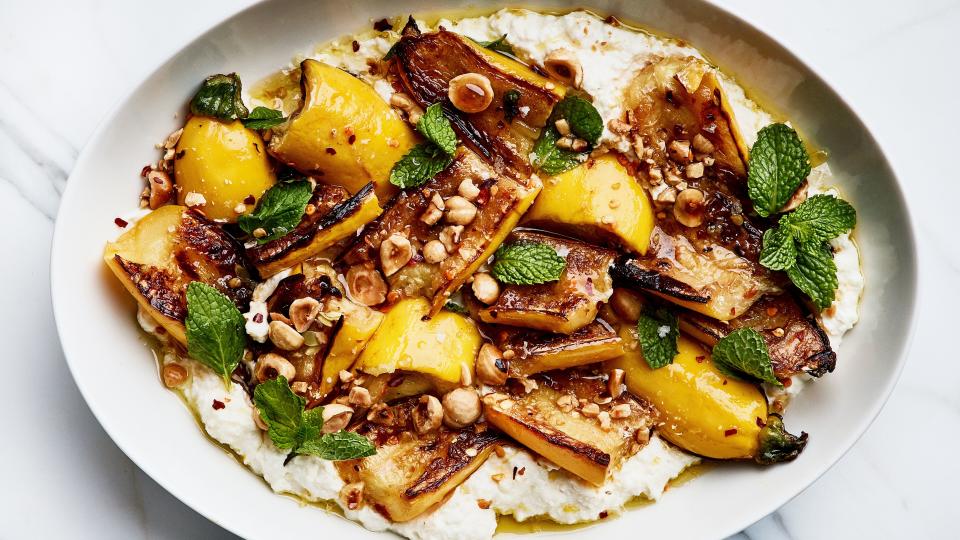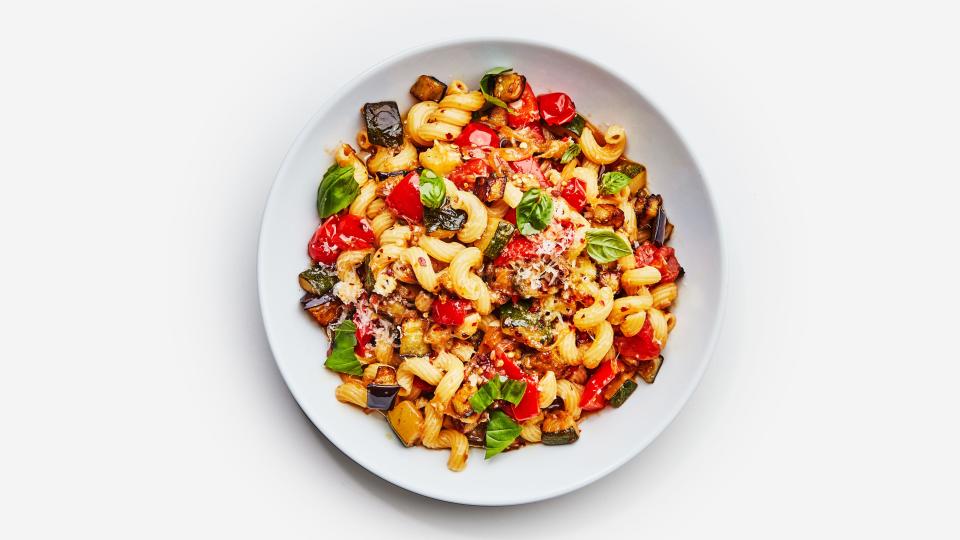How to Fix Your Relationship with Zucchini
Zucchini deserves our apology.
We’ve called it bland, watery, mushy, slimy, worthless. We’ve said that the only good thing about it is that it’s abundant and cheap—always around but never what you want. We’ve said that if we were drafting a team for summer produce kickball, it’d be our last pick. Even the striped or wacky-shaped zucchini still tastes like...nothing.
“Zucchini is basically horrible and there are no exceptions,” wrote food director Carla Lalli Music. “Sad,” said editor in chief Adam Rapoport.
Sorry, zucchini. It’s not you—well, it kind of is you—it’s mostly us. Just because a zucchini isn’t a tomato (slice, salt, eat, done), doesn’t mean it can’t be wonderful, valuable, and worthwhile. There are two guaranteed good ways to cajole zucchini into deliciousness.
First up: lots of heat, which will produce seared or charred surfaces and blistered skins. Zucchini is 94 to 95% water. In this case, “watery” is not an insult but a fact. Introducing it to heat early on, either on the stove or on the grill (or even in the oven at a high temp), allows you to get big pieces of zucchini nice and browned before the water seeps out and impedes the process. Once the zucchini is caramelizing, you’ll continue to cook it until it's until tender all the way through—a paring knife or a fork should slip in without much resistance—but not yet mushy.

This method gives you zucchini that’s sliceable (not spoonable!) and, since some of the water has cooked off, primed to absorb intense dressings and marinades (we like them garlicky, herby, spicy, and glaze-y). For extra insurance, salt the sliced zucchini ahead of time to jumpstart the water-wicking process.
The second great way to cook zucchini: to death. By which we mean low and slow, until much of that moisture seeps out and bubbles away, leaving the zucchini to fall apart into a jammy sauce with a concentrated zuke flavor (earthy, vegetal, sweet!) that’s perfect for spreading on toast or tossing through pasta. In this Ratatouille Pasta, pieces of zucchini are cooked for around 30 minutes, until they’re nearly unrecognizable (in a good way).
No matter which road you’re taking—hot and fast or low and slow—don’t forget the acid: Zucchini needs brightness in the form of citrus juice, vinegar, or even pickle brine to wake the heck up after being blasted with heat.
And if all else fails, bow to the great redeemer: zucchini bread.
Zucchini + pasta = a match made in heaven:
Ratatouille Pasta
Originally Appeared on Bon Appétit


